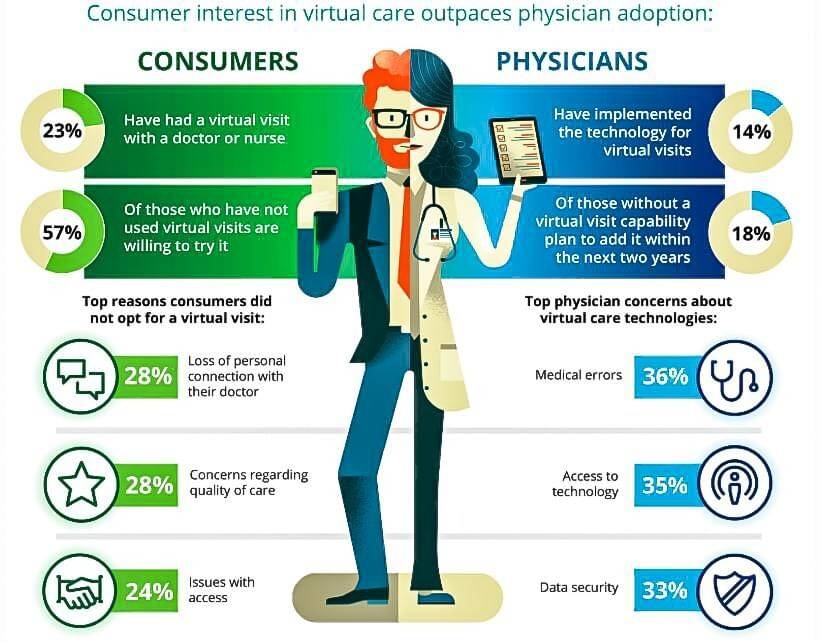Physicians agree that virtual care supports the goals of patient-centricity. The top three benefits from physicians’ perspective are:
 What explains physicians’ low interest in virtual care technologies? Here are the main reasons:
What explains physicians’ low interest in virtual care technologies? Here are the main reasons:
- Improved patient access to care (66 percent)
- Improved patient satisfaction (52 percent)
- Staying connected with patients and their caregivers (45 percent)
 What explains physicians’ low interest in virtual care technologies? Here are the main reasons:
What explains physicians’ low interest in virtual care technologies? Here are the main reasons:
- Lack of reimbursement
- Complex licensing requirements
- The high cost of the technologies
Customers seek other solutions to meet their health care needs. Virtual care is one of themAs in other aspects of our lives, technology is becoming an integral part of the practice of medicine. Virtual care capabilities can help physicians meet ever-increasing demands on their time and skill: caring for more patients, dealing with rising clinical complexity, and supporting patients in playing a greater role in their own care. Organizations committed to delivering connected, coordinated care are unlikely to achieve this without developing virtual health capabilities. If they fail to act now, they may risk losing significant market share as customers seek other solutions to meet their health care needs. Starting with an end in mind can help ensure that the chosen virtual health approaches and capabilities align with long-term vision and fiscal goals. By focusing on return on investment and value of investment, organizations can develop a comprehensive vision, define goals, prioritize and sequence virtual care investments, and decide how to measure success. Experience from organizations with virtual care programs only reinforces the fact that without executive sponsorship, a clinical champion, and alignment with the mission, success is likely not possible. About the study The 2018 Deloitte Survey of US Physicians is a national survey of 624 US primary care and specialty physicians. The survey is representative of the American Medical Association Masterfile with respect to years in practice, gender, geography, practice type, and specialty, so as to reflect the national distribution of US physicians. Download the full report here








